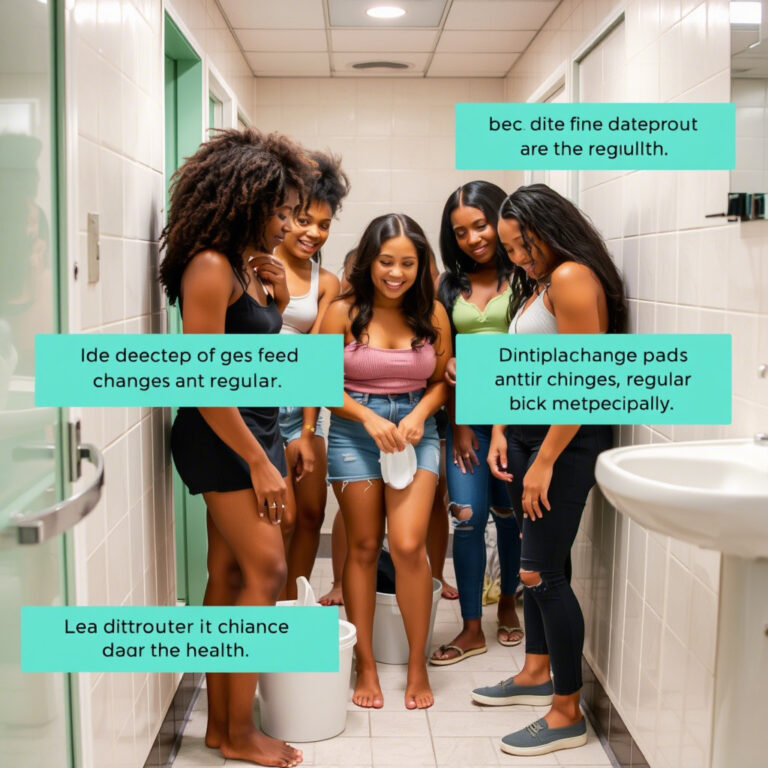Best Tips for Understanding How Long Can You Leave a Pad On Safely
# Best Tips for Understanding How Long Can You Leave a Pad On Safely
Have you ever wondered, “How long can you leave a pad on before it becomes unhealthy or uncomfortable?” It’s a question that many people have, especially when they’re first learning about menstruation. Whether you’re a parent guiding your child through this phase or managing your own period, understanding the right practices is crucial. Let’s explore the best ways to keep yourself or your loved ones safe and comfortable during their menstrual cycle.
Why This Topic Is Important
Teaching kids about proper menstrual hygiene is not just about comfort—it’s also about health. Many parents struggle with explaining how to manage periods safely without causing anxiety or confusion. By sharing clear guidelines on how long can you leave a pad on, we aim to empower both teens and adults alike. Proper care reduces the risk of infections and ensures confidence throughout the month.
Parents often face challenges like ensuring comfort while maintaining cleanliness all day long. Our advice will help simplify these tasks so everyone feels prepared and informed [[1]].
Key Parenting Tips for Teaching About Menstrual Hygiene
Actionable Advice Backed by Experts
Here are some practical tips to ensure safety and comfort:
– **Regular Changes**: Encourage changing pads every 4 hours minimum. Doing so prevents bacteria buildup and keeps skin irritation at bay [[6]].
– **Choose the Right Product**: Select pads based on flow intensity; heavier flows may require more absorbent options which should still be changed frequently.
– **Personal Comfort Checks**: Teach young ones to listen to their bodies—if there’s discomfort, it might be time for a change even if it hasn’t been four hours yet.
– **Educate on Hygiene Practices**: Discuss washing hands before and after handling pads to prevent spreading germs [[5]].
These strategies align closely with recommendations from healthcare professionals who stress frequent pad changes to avoid potential complications such as yeast infections or urinary tract infections (UTIs) [[2]].
Step-by-Step Guide to Applying These Tips
Let’s break down exactly what steps someone should take when using sanitary pads:
1. **Start Fresh**: Begin each day with a clean pad right after waking up.
2. **Monitor Throughout the Day**: Set reminders if necessary to check and change pads every 4 hours regardless of flow level.
3. **Adjust According to Need**: If experiencing heavy bleeding, consider changing more often than every four hours to stay dry and comfortable.
4. **End the Day Right**: Before bed, put on a fresh night pad designed for longer wear but remember never exceed 8-hour intervals between changes [[1]].
5. **Dispose Properly**: Always wrap used pads securely and dispose of them in appropriate bins to respect public sanitation standards.
By following these straightforward guidelines, individuals can maintain optimal hygiene levels during menstruation.
Common Mistakes to Avoid When Using Pads
Avoiding common errors ensures safer and more pleasant experiences managing monthly cycles. Here are a few mistakes to watch out for:
– **Mistake #1**: Wearing a pad for over eight hours – Doing so increases risks associated with prolonged exposure to moisture and bacteria [[9]].
– **Mistake #2**: Not adjusting pad type according to flow – Using incorrect absorbency levels can result in leaks or excessive wetness leading to discomfort.
– **Mistake #3**: Ignoring signs of irritation – Persistent itching or redness indicates possible allergic reactions or infections requiring medical attention.
Preventing these issues helps maintain good health and peace of mind.
Expert Advice or Research Findings
Healthline reports that trapped moisture provides an ideal environment for harmful microorganisms to multiply, emphasizing why timely pad replacement matters [[8]]. Similarly, CDC guidelines stress keeping the genital area clean to ward off rashes and infections linked to extended pad use [[10]].
Real-life scenarios illustrate practical applications of theoretical knowledge. For instance, imagine Sarah, a teenager just starting her period. Her mother teaches her to set phone alarms reminding her to switch out her pad regularly. Over time, Sarah develops independence in monitoring her own needs and avoids embarrassing situations caused by forgotten changes.
Real-Life Examples
Consider Jane, another example where proper education made a difference. Initially unsure about how long can you leave a pad on, she experienced minor irritations until her doctor explained the importance of regular changes. Now, Jane confidently manages her period knowing exactly when to swap out her pad, reducing any discomfort significantly.
Stories like these highlight the value of accurate information and consistent practice in promoting healthy habits around menstruation.
Conclusion
Understanding how long can you leave a pad on safely empowers individuals to manage their menstrual health responsibly. By adhering to expert-recommended practices and avoiding common pitfalls, we promote personal wellness and foster open conversations around menstruation within families. Share your journey applying these strategies—we’d love hearing how they’ve impacted your routine!
Remember, taking care of yourself during menstruation involves knowing how long can you leave a pad on properly. With consistent practice, achieving peace of mind alongside physical comfort becomes second nature!
FAQs
**Q: Is it okay to sleep in the same pad all night?**
A: Ideally, no. Even though nighttime pads are made for extended wear, aim to change them after 8 hours maximum to minimize infection risks [[1]].
**Q: What happens if I don’t change my pad often enough?**
A: Failing to change your pad frequently can lead to skin irritation, rashes, and increase the chance of developing infections due to accumulated moisture and bacteria [[2]].
**Q: How do I choose the right kind of pad for my flow?**
A: Light flows suit thinner liners, moderate flows benefit from standard pads, whereas heavy flows call for overnight or extra-absorbent varieties. Experiment until finding what works best personally [[6]].
**Q: Can wearing a pad too long cause serious health problems?**
A: Yes, prolonged use without changing can potentially lead to severe conditions including toxic shock syndrome or recurrent UTIs [[3]].
**Q: Should I change my pad after using the bathroom?**
A: While not mandatory, doing so contributes positively towards overall hygiene and freshness [[5]].
In summary, being mindful of how long can you leave a pad on plays a critical role in maintaining good menstrual hygiene. Implement these tips today and share your success stories with us!






